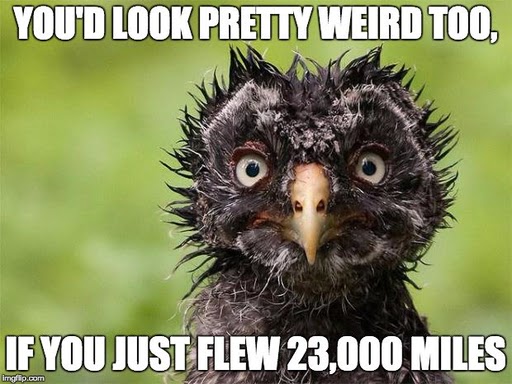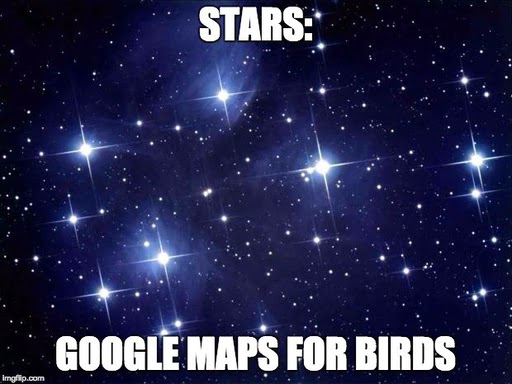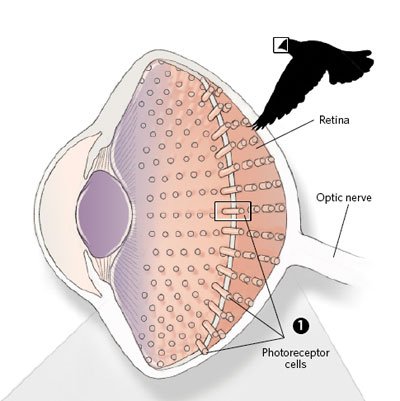During migration, birds use various methods to navigate. They rely on visual cues such as landmarks, the position of the sun and stars, and magnetic fields to orient themselves. Some scientists propose that birds have a quantum mechanic ability to detect magnetic fields, aiding in their navigation.
In different parts of the world, people often witness large flocks of migrating birds passing overhead at certain times of the day. Researchers and ornithologists have observed that birds tend to follow the same migratory paths year after year. Moreover, many of them return to the same locations at the beginning and end of their migrations, even if those places are thousands of miles apart!
On the contrary, while birds have this remarkable ability to navigate, some humans struggle to find their way just outside their own homes. So, what makes birds so adept at finding their way during migration?
A Brief Overview of Bird Migration
There are approximately 10,000 bird species worldwide, and nearly 20% of them are long-distance migrants. These migratory species typically travel in a north-south direction between their breeding and wintering grounds. Birds migrate primarily to reproduce, find food, and avoid predators.

Migratory routes can vary greatly in distance, ranging from a few hundred meters to over 50,000 miles. Humans have recognized these migratory patterns for over 3,000 years, yet the ability of birds to navigate remains a fascinating mystery. While some conclusions have been drawn and observations made, there are still many unanswered questions.
How Do Birds Navigate During Migration?
Using Their Instincts
Scientists have long believed that birds follow the landscape to reach their migratory destination since the paths remain consistent year after year. Ornithologists suggest that visual markers, sounds, smells, and learned social cues play a significant role in this process. This navigation ability is often referred to as piloting. Imagine flying thousands of feet above the ground and seeing rivers, forests, mountains, and landmarks spread out like a map.
 From up here, it does look like a map… (Photo Credit: Frank Munch / Fotolia)
From up here, it does look like a map… (Photo Credit: Frank Munch / Fotolia)
It is believed that birds can mentally map out their migratory pattern, and since large-scale environments generally remain stable throughout a bird’s lifetime, this navigation method is highly effective. It is speculated that young birds learn this mental map through social cues, such as joining their parents in their annual migration, like a trial run before venturing out on their own.
By utilizing everything from coastlines to major roads, birds can navigate without the need for a physical map because they are constantly observing the real-life map beneath them. However, this method may not be as effective during nighttime migration or in conditions where visual and other sensory cues are limited.
Looking Up, Instead of Down
In situations where birds encounter unfavorable conditions, such as when flying over large bodies of water or vast land areas without distinct features, another method has been proposed. It is believed that some bird species use celestial navigation, similar to ancient sailors, to find their way through the more challenging parts of their journey. Since the orientation of the sun and stars remains constant year after year, birds can rely on them to navigate.

Using Vision to Detect Magnetic Fields
One of the more complex theories explaining avian migration involves birds’ ability to detect the Earth’s magnetic fields and use them to navigate. This theory proposes that certain bird species have magnetic particles in their beaks that act as a compass. However, this theory has been replaced by the concept of vision-based magnetoreception.
According to the vision-based magnetoreception theory, birds can “see” magnetic fields and align themselves with the desired direction. For example, if a bird is migrating south, it will align with a south-facing magnetic field. Laboratory experiments have successfully generated artificial “magnetic south,” causing birds to move in that direction.
 Simple Avian Eye Diagram (Photo Credit: www.the-scientist.com)
Simple Avian Eye Diagram (Photo Credit: www.the-scientist.com)
Researchers have determined that birds require clear vision in their right eyes to detect magnetic fields. Through a goggle experiment, it was discovered that this ability is related to sight. The prevailing theory is that a photochemical compass in the bird’s eyes is responsible. Photoreceptors in the bird’s eyes initiate a chemical process in the retina, producing a photochemical species that reacts to the strength and direction of the magnetic field. This means that magnetic fields may appear as different moving colors to birds, allowing them to follow a memorized path and preventing them from getting lost during migration.
 Canadian Geese Migrating (Photo Credit: Gino Santa Maria / Fotolia)
Canadian Geese Migrating (Photo Credit: Gino Santa Maria / Fotolia)
A Quantum Explanation?
The presence of a magnetic field sensor inside a bird’s retinal cells remains a great mystery in vision-based magnetoreception. One recent theory suggests that quantum mechanics may hold the answer. For a detector sensitive to both the strength and direction of magnetic fields, there needs to be a mechanism that amplifies the relatively weak magnetic effects of the Earth to make them detectable.
In quantum mechanics, a radical pair consists of two molecules created simultaneously, each with one electron of opposing spin. These radical pairs are highly sensitive to external forces and magnetic fields. When a specific light-sensitive protein called cryptochrome, found in the retinal cells of birds, is exposed to certain wavelengths of green or blue light, it can create these radical pairs. The study of magnetoreception in this way is a recent field in quantum biology and is being researched globally.

Quantum Biology
There are various theories available, but this quantum explanation appears to be logical. It is important to find the correct answer because there are numerous artificial objects like radio towers and power lines that produce weak magnetic fields. These artificial obstacles have been observed to disturb migration patterns, which can have devastating effects on bird populations. Gaining a precise understanding of how birds utilize these waves for navigation could assist humans in reducing their detrimental influence on bird migration.
